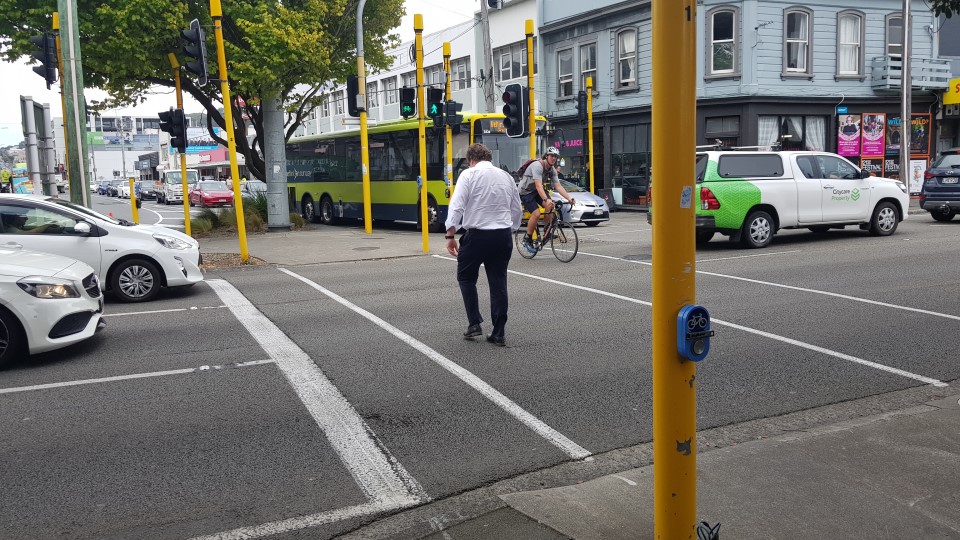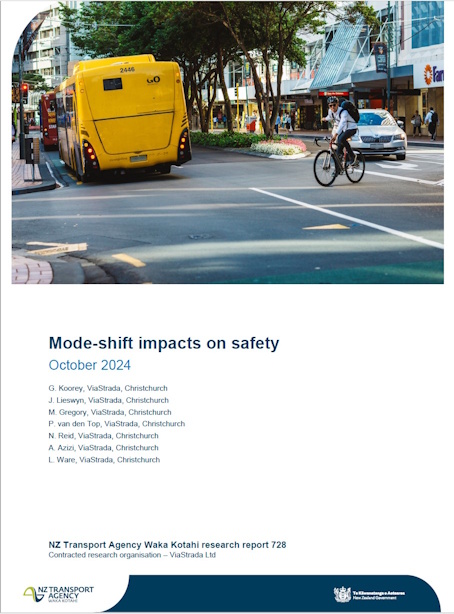Mode-shift impacts on safety
Where presented / published:
NZTA website, Research Report #728 and spreadsheet tool, Oct 2024
Many jurisdictions have targets to reduce vehicle travel and crashes. This study (commissioned by NZTA and undertaken by ViaStrada) examined how these efforts can be integrated. Reducing motor-vehicle-kilometres travelled can reduce crash risk in addition to emissions. However, our current understanding of these impacts is limited, due to the complex interactions between the various risk factors plus inadequate data.
This research sought to determine the actual and potential safety impacts of achieving mode shift from private motorised vehicles to public transport, active modes and micro-mobility, in conjunction with making changes to the overall volume of travel by all modes. It aims to identify the individual and collective safety profiles of different travel modes, and the potential safety outcomes for different demographic groups that could arise from mode shift away from private, motorised vehicles in New Zealand.
This study examined research concerning the effects of mode shifts on casualty crash rates. It found that most risk factors have been studied individually, with many areas nearing academic consensus on relationships. Most studies only considered a few modes and did not explore multiple interactive relationships, and so tend to underestimate the full safety benefits of community-wide shifts from driving to walking, bicycling and public transport.
This research has collated recent police crash report and hospital data, and produced a spreadsheet model that enables testing of various mode-shift scenarios, at a national level and for a diverse sample of urban areas and demographics. However, more research is needed to evaluate how mode changes are likely to affect crash casualties when other infrastructure and policy factors are taken into account.










